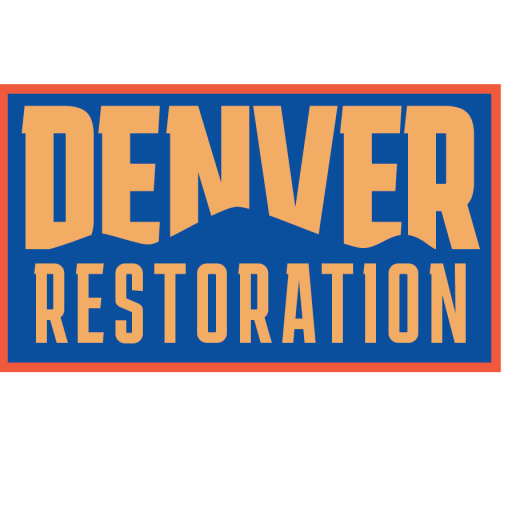Understanding the Risks: Water Damage Restoration and Its Importance
Water damage can be chaotic and devastating for any property owner. Whether it’s a residential home or a commercial space, the aftermath of such damage can be overwhelming. Understanding what mistakes to avoid during water damage restoration is crucial in curbing further deterioration and loss.
Safe restoration methods, when carried out by professionals, can turn around the situation, creating a safe and habitable space again. Effective water damage restoration not only helps in salvaging the property but also mitigates health hazards that might be lurking unseen.
Assessing the Damage: The First Step towards Safe Restoration
An accurate damage assessment forms the bedrock of successful and safe water damage restoration. This involves a thorough evaluation of the water damage extent, water contamination levels, and potential health risks. By referring to the Industry standards for damage assessment and estimation, the restoration team can devise a strategic plan for mitigation and restoration.
Employing High-Tech Restoration Techniques and Equipment
Post the damage assessment, restoration companies bring in cutting-edge technology tailored to tackle different damage levels. These could range from high-velocity air movers, dehumidifiers, infrared cameras to thermal fogging and antimicrobial treatments. Their expertise in transforming water damage repair is evident from their meticulous approach to bringing life back into the property.
Understanding Environmental and Health Safety Concerns
Water damage can often escalate to serious environmental and health-related issues if not addressed promptly and effectively. Bacteria, mold, and other harmful microorganisms can infest your property, posing a dire threat to the occupants’ health. It’s crucial to get experts on board for mold remediation to ensure a safe and healthy living or working space.
Legal and Insurance Compliance
Navigating the murky waters of insurance claims during water damage restoration can be a daunting task. A professional restoration team will help you understand your policy, document the damage, and assist in the claims process. Remaining compliant with local laws and regulations is crucial during this process.
Crisis Management and Customer Communication
Effective communication acts as a pillar of support for distraught clients navigating the aftermath of water damage. A professional restoration company would keep the lines of communication open, informing and updating you at each step of the restoration process. This combined with their ability to manage the crisis effectively ensures a hassle-free and satisfactory damage restoration experience for the property owners.
Commercial Water Damage Restoration
Commercial spaces have a unique set of challenges they have to overcome during water damage restoration. A company specializing in commercial water damage restoration must understand these distinct needs and provide solutions accordingly to ensure business continuity with minimal disruption.
The Safe Restoration Journey: Ensuring Safety Post Damage
The journey to recovery post damage needs to be rooted in safety. Whether it’s remaining vigilant after smoke damage or dealing with water damage, the safety of the occupants remains paramount. Safe restoration methods ensure the property is back to its former glory, free from hidden risks.
Mold Cleanup: A Crucial Part of Water Damage Restoration
Mold infestation is a common aftermath of water damage. If not addressed in time, mold can pose severe health risks and compromise the structural integrity of your property. Effective mold cleanup forms a crucial part of water damage restoration, ensuring a hands-on safe restoration process.
Navigating the aftermath of water damage can be stressful and overwhelming. Yet, the importance of water damage restoration cannot be underestimated. When done right and safe, it salvages properties, protects health, and brings back a sense of normalcy in the lives of those affected. Remember, a safe restoration process is not just about the property; it’s about the people who inhabit it.
Exposing Unseen Damage: The Invisible Threats of Water Damage
Water damage wreaks havoc without discrimination. Its aftermath isn’t confined to visible destruction alone but can also lead to a myriad of hidden threats. These invisible damages range from structural weaknesses to colonies of harmful bacteria and mold. Only through a thorough and meticulous water damage restoration process can these unseen threats be effectively mitigated.
The Silent Killers: Mold and Bacteria
One of the gravest repercussions of water damage in any property is the onset of bacterial growth and mold infestation. These organisms are not only harmful to the property’s structural integrity but pose significant health threats too. Heightened exposure to mold can lead to respiratory issues, allergic reactions, and even more severe health conditions. Bacteria, on the other hand, lurking in contaminated standing water, can lead to severe infections if left unaddressed.
The Hidden Peril: Structural Damage
Water seepage into the building materials and foundations can weaken the property’s structure over time—an issue that remains largely invisible until it’s too late. To prevent such disastrous consequents, involving professionals competent in inspecting and addressing structural issues during water damage restoration is quintessential.
The Hour Of Need: Responding To Fire Damage
While water damage can be punishing, fire damage is equally, if not more, distressing. The unparalleled devastation that fire brings with it requires immediate response and action. Adhering to a systematic and fully compliant fire damage restoration process is the key to salvaging property and possessions from the grip of such disaster.
Insurance and Legal Adherence for Fire Damage
A comprehensive understanding of insurance policies, legalities, and regulations surrounding fire damage restoration is crucial. Without proper guidance, it’s easy to feel lost among complicated jargons, clauses, and paperwork. To help navigate this maze and ensure a smooth claims process, professional restoration teams work closely with their clients, handling documentations, understanding policy limitations, and offering comprehensive support throughout the process.
The Invisible Foe: Smoke Damage, Lingering Odor, and Soot
While fire damage is conspicuous, the invisible enemy, often overlooked, is the damage caused by smoke and soot. These residues, coupled with the pungent odor they leave behind, can pose a significant challenge during property restoration. Moreover, soot can be highly acidic, leading to corrosion and further damage to property and possessions.
Effective Removal Of Smoke Odor
The process of smoke and odor removal necessitates great expertise and professional equipment. Failing to eliminate the burnt smell can result in it permeating inside walls, carpets, and upholstery, making the living or workspace unbearable. Detailed understanding about smoke odor removal strategies goes a long way in ensuring a healthier and fresher environment.
Leveraging Technology: Turning The Tide In Fire Damage Restoration
Modern technology and equipment have bolstered the capabilities of fire damage restoration processes. From thermal imaging cameras for detecting hidden hotspots and moisture content to advanced deodorization techniques, technological advancements have been game-changers.
Creating A Safe Haven: Fire Damage Restoration And Safety
A fire damage restoration process isn’t merely about reviving a property; it’s also imperative to ensure its safety. Taking prompt measures, like installing safe and secure barriers or tarping over the damaged roofing, can prevent additional damage and help secure the property.
The Road To Recovery: The Intersection Of Water And Fire Damage Restoration
Paths to recovery from water and fire damage might be different, yet they intersect at many crucial points. From assessing damage in the initial phases, employing high-tech restoration techniques, understanding environmental and health safety concerns, to catering to insurance and legal compliance, both processes operate under a shared drive to revive, restore, and recover.
Nevertheless, it’s crucial to remember that every recovery and restoration story is unique. The severity of damage, type of property, prevailing local regulations, and a myriad of other factors influence the approach towards restoration. Hence, professional restoration teams must possess the flexibility to adapt and customize their strategies to different scenarios.
Through effective water and fire damage restoration, more than just properties and possessions are saved. It’s also about preserving memories, ensuring health and safety, and bringing back a sense of normalcy to the lives disrupted by these unfortunate events. After all, restoration isn’t just a process; it’s about restoring hope and comfort for those impacted.

